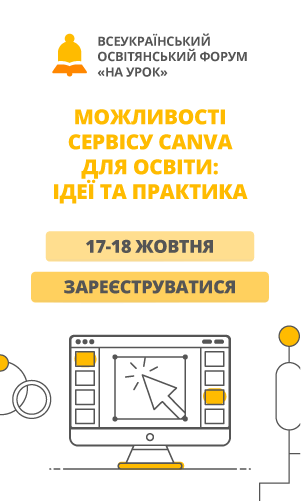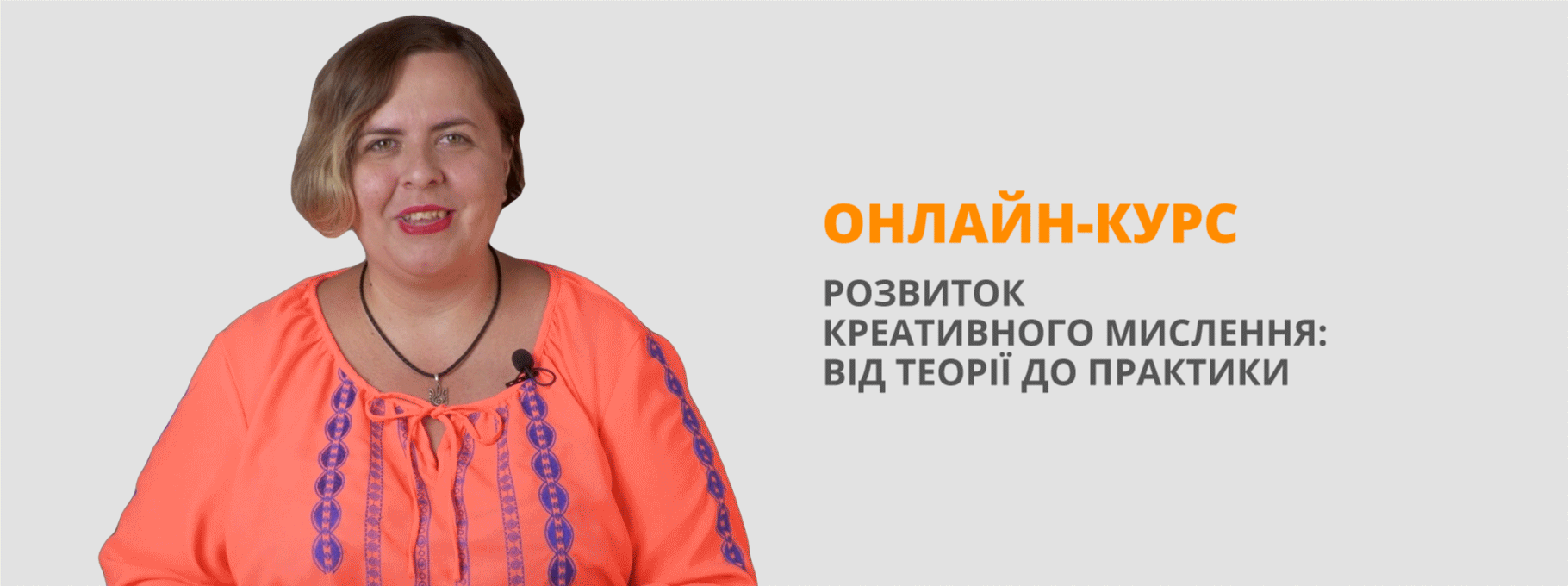Інтелектуальна гра до Дня святого Валентина для 8-х класів «Love makes the world go round»
Мета інтелектуальної гри – познайомити учнів 8-х класів з особливостями свята Дня Святого Валентина та розвиток пізнавального інтересу і активності школярів при вивченні іноземної мови. Урок-інтелектуальна гра (імпровізоване навчальне заняття, що має нетрадиційну структуру). Така форма роботи спрямована на активізацію навчально-пізнавальної діяльності учнів, бо вони глибоко зачіпають емоційно-мотиваційну сферу, формують дух змагальності, збуджують творчі сили, розвивають творче мислення, формують мотивацію навчально-пізнавальної та майбутньої професійної діяльності. Нетрадиційні форми уроку англійської мови реалізуються, як правило, після вивчення будь-якої теми або кількох тем, виконуючи функції навчального контролю. Такі уроки проходять в незвичайній, нетрадиційної обстановці. Використовуючи інформаційні ресурси, можна, інтегруючи їх у навчальний процес, більш ефективно вирішувати цілий ряд дидактичних завдань на уроці: – удосконалювати вміння аудіювання на основі автентичних звукових текстів; – поповнювати словниковий запас, як активної, так і пасивної лексики сучасної мови; – формувати стійку мотивацію іншомовної діяльності. Застосування ігрової форми роботи (конкурси, вікторини), різні способи перевірки знань (бесіда, розв'язування кросвордів і анаграм, робота з малюнками, письмові завдання) та використання різноманітного дидактичного матеріалу (картки, таблиці, постери, слайди, відео) зроблять уроки цікавими й захопливими. Методика проведення нестандартного уроку розглядається як один із найважливіших напрямків підвищення пізнавального інтересу до вивчення іноземної мови, якості знань учнів.
Каховська ЗОШ I-III ступенів №4
Інтелектуальна гра
до Дня святого Валентина
для 8-х класів
«Love makes the world go round»
 Підготувала
Підготувала
вчитель англійської мови:
Ємець Яна Олександрівна
2018 рік
Анотація до розробки інтелектуальної гри,
присвяченої Дню святого Валентина для 8-х класів
«Love makes the world go round»
Тип уроку: нестандартний.
Вид уроку: інтелектуальна гра.
Мета інтелектуальної гри – познайомити учнів 8-х класів з особливостями свята Дня Святого Валентина та розвиток пізнавального інтересу і активності школярів при вивченні іноземної мови.
Урок-інтелектуальна гра (імпровізоване навчальне заняття, що має нетрадиційну структуру). Така форма роботи спрямована на активізацію навчально-пізнавальної діяльності учнів, бо вони глибоко зачіпають емоційно-мотиваційну сферу, формують дух змагальності, збуджують творчі сили, розвивають творче мислення, формують мотивацію навчально-пізнавальної та майбутньої професійної діяльності.
Нетрадиційні форми уроку англійської мови реалізуються, як правило, після вивчення будь-якої теми або кількох тем, виконуючи функції навчального контролю. Такі уроки проходять в незвичайній, нетрадиційної обстановці. Використовуючи інформаційні ресурси, можна, інтегруючи їх у навчальний процес, більш ефективно вирішувати цілий ряд дидактичних завдань на уроці:
– удосконалювати вміння аудіювання на основі автентичних
звукових текстів;
– поповнювати словниковий запас, як активної, так і пасивної
лексики сучасної мови;
– формувати стійку мотивацію іншомовної діяльності.
Застосування ігрової форми роботи (конкурси, вікторини), різні способи перевірки знань (бесіда, розв'язування кросвордів і анаграм, робота з малюнками, письмові завдання) та використання різноманітного дидактичного матеріалу (картки, таблиці, постери, слайди, відео) зроблять уроки цікавими й захопливими. Методика проведення нестандартного уроку розглядається як один із найважливіших напрямків підвищення пізнавального інтересу до вивчення іноземної мови, якості знань учнів.
Вчитель-наставник: Зосюк Катерина Василівна – вчитель англійської мови ЗОШ I-III ступенів №4.
Інтелектуальна гра: «Love makes the world go round»
Мета: познайомити учнів з особливостями свята День Святого Валентина.
Цілі:
- підвищення ефективності навчально-виховного процесу, впровадження нових методів роботи при навчанні іноземної мови;
- поповнення знань з країнознавства Англії, США, України та інших країн.
Навчальні:
- удосконалення навичок діалогічного мовлення та розширення словникового запасу учнів;
- формування навичок комунікативного спілкування.
Виховні:
- виховання поваги та інтересу до іншомовної культури;
- виховання вміння колективного творчого мислення.
Розвиваючі:
- удосконалення навичок сценічної поведінки і дикції школярів;
- розвиток міжкультурної грамотності та освітнього рівня учнів.
Обладнання: презентація, відео ролики, роздатковий матеріал, символіка свята.
Підготовка: перед проведенням інтелектуальної гри учні подивилися фільм на англійській мові про день Святого Валентина, отримали завдання підготувати презентацію та інформацію про історію та символи свята, виготовили колажі, присвячені святу.
Хід уроку:
- Організаційний момент.
Teacher: Dear Friends! Ladies and Gentlemen, Children and Grown-ups!
You are welcome to our game «Love makes the world go round», dedicated to St. Valentine’s Day, which is always held on February 14th and brings us happiness and good luck. People all over the world celebrate this romantic holiday. This holiday is the favorite holiday of all English children and adults. It is the day on which lovers express their love for each other by presenting flowers and sending greeting cards known as «valentines».
- Розподіл класу на 2 команди за жеребом. Оголошення теми і цілей гри, умов конкурсів.
Teacher: Let’s see which of you is smartest, the most romantic and which of you knows English the best. You divide into two teams. You will get «a little heart» for each right answer. I wish you good luck! But before we start I want to meet you with someone.
- Активізація опорних знань учнів та перевірка домашнього завдання.
З'являється валентинка
Valentine Card (a girl): Hello, dear boys and girls! Hello, dear guests and teachers! I’m glad to see you all. Do you know me? Have you recognized me?
Children in the hall: Are you a pupil?
Valentine Card: No, I am not.
Children: Are you a postman?
Valentine Card: No, I am not.
Children: Are you a Valentine Card?
Valentine Card: Yes, right you are! I am a Valentine Card. I am a special greeting for Saint Valentine’s Day, which is a festival of love and friendship for all people. Since I am here, let’s begin our party! But do you know why this day called St. Valentine’s Day? Who was Valentine?
Teacher: The legend of celebrating the St. Valentine’s Day has its roots deep in the Middle Ages. No one really knows the actual origin of Saint Valentine’s Day. But I think that our members help us learn more about the history of this holiday. Please, tell us some interesting facts about St. Valentine’s Day.
(Учні першої команди виходять до дошки та розповідають історію походження свята дня святого Валентина. Розповідь супроводжується презентацією, котру підготували учні. Слайди 6-9)
P1: The legend of celebrating the St. Valentine’s Day has its roots deep in the Middle Ages. There is almost nothing known about the life of the real Christian Valentine (born in 3 century A.D. in the settlement Terni – Roman Empire).
P2: They say that he was a bishop, who helped young beloved to write love letters, made the peace of those who were in quarrel etc. Then he was arrested by order of Emperor Julius Claudius II, who did not allow his soldier to get married and Valentine married the legionaries secretly.
P2: Being in prison, he fell in love with the blind daughter of his executioner - and healed her. Many historians seem to trace St. Valentine’s Day to an ancient Roman festival called “Lupercalia”. It was held on February 15 to honour Faunus the God of animal life, hunting, herding, and the patron of husbandry.
P3: There was also another St. Valentine who was a good friend to children. Because he didn’t worship the gods decreed the Roman Emperor, he was put in prison. The children missed him and sent him loving notes. That’s why we exchange friendly and caring messages on this day.
P4: Other people believe that the world “valentine” came from a Norman world “galantine”, which means “a gallant” or “a lover”. They connect the celebrating of St. Valentine’s Day with an old English belief that birds choose their partners on February 14.
Teacher: Well done! I see you have learned many facts of the origin of St. Valentine’s Day.
Valentine Card: But wait! Where are my helpers – the symbols of love and friendship, I wonder? Flowers, stars, sweets, birds, come here, come here!
Teacher: Don’t worry pupils from second team prepared stories about popular symbols of this romantic holiday.
(Учні другої команди розповідають про символи дня закоханих, які стали популярними у всьому світі. Розповідь про символи супроводжується їх показом. Слайди 10-13).
P1: There’re many symbols of Valentine’s Day. Listen to the stories about some of them.
Heart. Emotions are feelings such as love, happiness, anger, or fear. A long time ago people believed that all the emotions were found in the heart. In later years they thought only the emotion of love was connected with the heart. The heart is still a symbol of love and because of this; it is also a symbol of Valentine’s Day.
P2: Red Rose. The rose was the favorite flower of Venus, the Roman goddess of love. Red is a color that stands for strong feelings. That is why the red rose is a flower of love.
P3: Ribbons. Ribbons go back to the days when ladies gave ribbons to their favorite knights when they went to war.
P4: Lace. Comes from a Latin word; it means “to catch”. Lace was supposed to catch the heart of a loved one. Lace is a pretty fabric made by weaving together fine threads. Hundreds of years ago women carried lace handkerchiefs. A man nearby might pick it up and return it to her.
P5: Gloves. Years ago when a man proposed marriage to a woman he asked “for her hand”. The hand became the symbol of marriage and love. Soon gloves also became a symbol of love.
P6: Rings. In some countries men and women exchange rings when they became engaged or marry.
P7: Love birds and Doves. Lovebirds are colorful parrots found in Africa. They are called love birds because they sit closely together in pairs. Doves were thought to be favorite birds of Venus. They remain with the same mates all their lives.
P8: Cupid. Son of Venus, goddess of love. He could cause people to fall in love by piercing them with one of his magic arrows.
- Основні етапи. Вікторини та завдання
Вікторина «Brain storm».
Teacher: Now you know a lot about the holiday and symbols of Valentine's Day. It is a time to check your knowledge. First task is a quiz. Chose and raise the card with the correct answer. Complete the sentences about history of romantic holiday.
(Учні в командах відповідають на запитання вікторини. В кожної команди три таблички із варіантами відповідей, учасники обирають вірну та підіймають картку. Слайди 14-27).
Гра “Association card”.
Teacher: And now let's check out how well you know now symbols of Valentine's Day. Math the columns and connect symbols.
(Учасники з’єднують символи із картинками. Слайд 28)
MATCH THE COLUMNS
- 1. a part of your body a) Cupid
- 2. a heart-shaped card b) smile
- 3. a man who cared for people c) chocolates
- 4. a boy shooting arrows d) rose
- 5. a kind of flower e) lace
- 6. a bunch of flowers f) St.Valentine
- 7. a friendly look g) bouquet
- 8. used with a bow h) heart
- 9. a fancy material i) valentine
- 10. a kind of candy j) arrow
Гра «Find the pair»
Teacher: Now we want to know how good you are at literature and art. Our next game is called “Find a pair”. I'll give you some cards of famous people. You must find the pair and describe them. The opposite team should guess who it is.
Example:
His name is ...
He is 35.
He is an actor.
He likes to play football.
He can play the guitar.
(Учасникам роздають картки з іменами відомих артистів, співаків, спортсменів або інших людей. Діти повинні скласти пару і розповісти про неї. Протилежна команда повинна вгадати хто це, за описом зовнішності знаменитості. Слайд29)
FIND THE PAIR
- 1. Carmen a. Othello
- 2. Adam b. Lyudmila
- 3. Napoleon c. Scarlet
- 4. John Lennon d. Romeo
- 5. Rhett Buttler e. Don Jose
- 6. Pushkin f. Eve
- 7. Dezdemona g. Ophelia
- 8. Ruslan h. Joko Ono
- 9. Hamlet i. Josephine
- 10. Juliette j. N.Goncharova
Конкурс «Declaration in love»
Teacher: Valentine's Day is a special time when people tell each other that they love them and care about them. To celebrate the date, people send special cards with romantic messages. We offers teams to make messages and translate them.
(Учасники мають поставити слова в реченні в правильному порядку і перекласти на українську мову. Слайд30,31).
Team 1:
- I love you, mysterious Stranger (Я люблю тебе загадкова незнайомка);
- To you with love from me (Тобі з любов'ю від мене);
- I’ve got my eye on you. (Ти впала мені в око. Я кинув на тебе оком).
Team 2:
- To you with love my sacred Admirer (Тобі з любов'ю мій таємничий залицяльник);
- Be my Valentine (Будь моїм Валентином);
- Don’t break my heart (Не розбивай моє серце);
Музична пауза.
Teacher: Do you like to sing? Now for you have musical break. Listen and look attentively after we will check how you understand the video.
(Учасники мають подивитись відео ролик та підставити вірно відповісти на запитання. Відео «It’s only love»).
Say if the following sentences are true or false, according to the song and the video.
1. There is no first love or last love, there is only love.
2. The girl is afraid of love.
3. The boy does not try to make her smile.
4. The boy tries his best to win her.
5. Love can break your heart.
6. The story has a happy ending.
Гра «Broken Hearts»
Teacher: This morning a strange occurrence happened to me. I’ve got a message, but I cannot read it. It is encoded. Help me to decode it . Use the code key to find the secret message.
(Вчитель роздає командам зашифровані листи, де кожна літера відповідає певній цифрі. Учні в командах розшифровують послання на день закоханих. Додаток 1)
Конкурс «Words»
Teacher: Make up words from «St. Valentine's Day» as many as you can. I give you 3 minutes.
(Діти в команді складають слова і записують їх. Після чого зачитують вголос. Перемагає команда що склала найбільшу кількість слів. Слайд 35).
Teacher: Everyone wants to get a valentine card. Find the missing and make a Valentine card for the opposing team.
If you will be my……,
My charming …….dear,
The ….can never help but shine
Throughout the …..year.
Sun, Valentine, little, coming
( Valentine, little, sun, coming)
I …… that Valentine’s Day
Will bring you lots of …..!
He ……… you’re extra – specially nice,
And so does ……….!
Fun, everyone, hope, thinks
( Hope, fun, thinks, everyone)
(Учні пишуть валентинки протилежній команді, правильно використовуючи слова. Слайд 36).
Teacher: In the end I propose to sing the famous song «I just called to say I love you» about love by filling the missing words.
(Учасники співають піню підставляючи пропущені слова. Відео «I just called to say I love you»)
- Заключний етап.
- підведення підсумків гри;
- оголошення переможців;
- нагородження дипломами.
Teacher: It’s time to count up our «hearts». We hope that you enjoyed our today’s game. Thank you for your time. It’s great that English helped us speak about love today!
Використані джерела:
1. Різні види нетрадиційних уроків. Дидактика. Навчальний посібник /
І. В. Малафіїк – К.: Кондор, 2009.– 406 c.
2. Традиції та свята Великобританії. Юрк І. В.
3. en.wikipedia.org/wiki/Valentine%2sDay
4. www.stvalentinesday.org/valentines-day-poem.html#be-my-valentine
5. www.stvalentinesday.org/history-of-st-valentines-day.html
6. www.stvalentinesday.org/legends-of-st-valentines-day.html
7. www.history.com/topics/valentines-day
8. http://www.englishexercises.org/


про публікацію авторської розробки
Додати розробку
